Yesterday i paid a visit to the Piemonte Share festival, at the Science Museum in Turin. The new media art event might have its flaws but its energy and focus remain pretty unique in the country. Sunday was the day i wouldn’t have missed for the world: i knew that neither Bruce Sterling nor Siegfried Zielinski would have disappointed the audience.
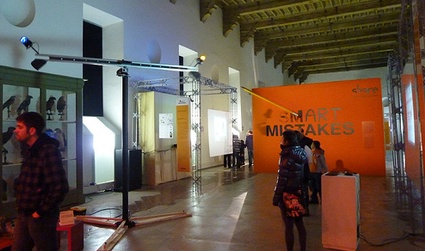
I wish i could have spent more time at the festival and dedicated a more generous space to it on this website but since all the art events are now taking place during the same weekend in Turin (and once again i believe that the person behind this idea should be hanged, drawn and quartered on Piazza Castello), all i’m going to blog is a series of bits and pieces from yesterday.
My first stop was for the exhibition which featured works from both the Smart Mistakes theme and the Share Prize.
Like every year, there were works that fascinated the public and works that made me happy (I feel like an old bat when i realize that nowadays they almost never coincide.) Let’s start with an example of the former, shall we?
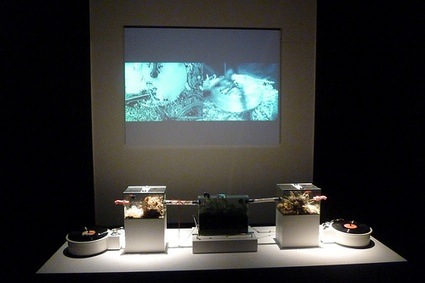 Kuai Auson, 0h!m1gas, 2008
Kuai Auson, 0h!m1gas, 2008
0h!m1gas (migas being the spanish word for ants), by Kuai Auson, is one of the latest addition to the long (long!) line of artworks in which the movements of animals perform a task usually fulfilled by human beings.
Some activate vehicles (think of Ken Rinaldo’s Augmented Fish Reality, Garnet Hertz’s Cockroach Controlled Mobile Robot or Seith Weiner’s Terranaut). Others control the arrival of your emails (RealSnailMail by boredomresearch). Some can even play musical instruments. The mice of Gail Wight’s Rodentia Chamber Music Chamber play the piano, carillon, drum, harp and cello. The fish in Keny Marshall’s Apophenia play brass horn.
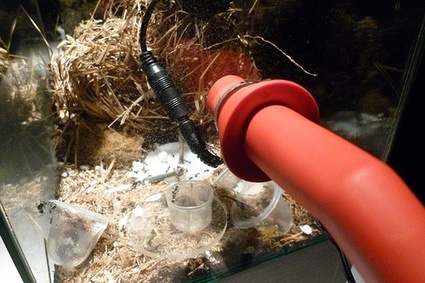 0h!m1gas harnesses the relentless activity of an ant colony into a DJ scratching performance.
0h!m1gas harnesses the relentless activity of an ant colony into a DJ scratching performance.
Just as the DJ/VJ culture is characterized by movements and noises expressing a human state of mind and feelings, these social agents engage in turntablism activated via motion tracking and contact microphones, so that the communication network in the colony can be analyzed as a form of biological data that produces a new form of emerging music.
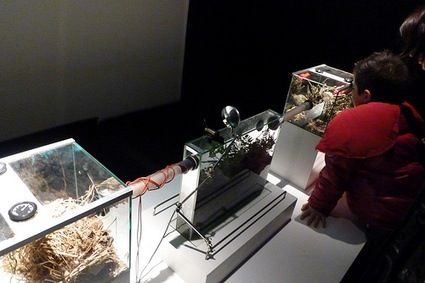
My pictures are the crappy usual. Apologies to the artist.
 knowbotic research, macghillie_ just a void, 2009-10, © Knowbotic Research
knowbotic research, macghillie_ just a void, 2009-10, © Knowbotic Research
And now for the project that made me happy.
Inspired by the proliferation of surveillance technologies, knowbotic research‘s macghilie – just a void transports into a more urban setting the ghillie suit. This type of camouflage clothing, first used by hunters and then by soldiers in WW1, is covered in loose strips of cloth or twine, so that its wearer will be confused with heavy foliage.
Here’s what i wrote about the project a while ago: One of the battle cries of KR is that they want to see the development of new zones of in-transparency in which people can fully experiment and circulate, where one is neither representable nor identifiable. A bit like the character (some kind of Cousin Itt alter-ego) that appears in their projects macghilie – just a void. What would happen if we fight surveillance society with transparency?
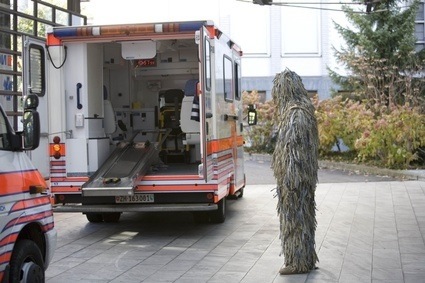 Knowbotic Research, Macghillie – just a void, 2010. © Knowbotic Research
Knowbotic Research, Macghillie – just a void, 2010. © Knowbotic Research
But let’s get back to Smart Mistakes, the theme of the festival which elevates glitches and errors to a more noble status. Bruce Sterling gave a new perspective on our notion of mistake with a presentation of 3 inventors (somewhere in his presentation he also managed to mention Carla Bruni):
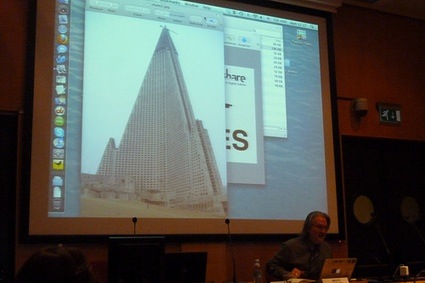
The first one is Alexander Graham Bell, the inventor of the first practical telephone but also the author of many less successful inventions and experiments.
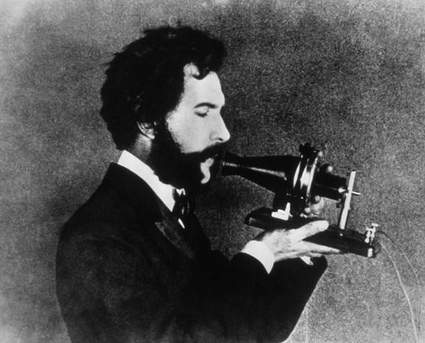 Alexander Graham Bell
Alexander Graham Bell
Samuel Langhorne Clemens, aka Mark Twain, who invested and lost the fortune he had earned with his books in the Paige typesetting machine, a device designed to replace the human typesetter of a printing press with a mechanical arm. Twain was hoping he would turn into a media mogul by selling the machine to all the newspapers in the country. Unfortunately, the Paige composer took too much time to be perfected and was made obsolete by the Linotype.
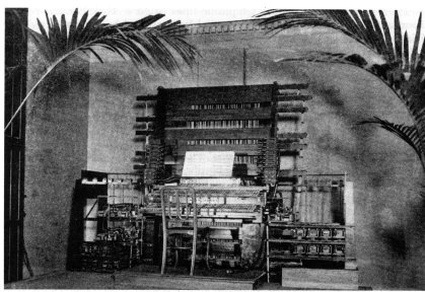 Telharmonium console by Thaddeus Cahill 1897
Telharmonium console by Thaddeus Cahill 1897
The most interesting character however is Thaddeus Cahill, an engineer who invented the telharmonium. Together with Alexander Graham Bell, Cahill dreamt that the telharmonium music would soon be broadcast into hotels, restaurants, theaters, and even houses via the telephone line. As we know, this never happened.
But what if we got it all wrong? What if the man whose genius should be celebrated in this trio was Thaddeus Cahill? He might never have achieved his dream of rocking ball rooms with music played over phone lines but maybe we should herald him as the god father of electronic music. His telharmonium after all was the first electromechanical musical instrument ever created. And if we look closer in history, how will upcoming generation view the walkman which has recently put out of production after 30 years of activity? Will they look at it the way we look at the telharmonium today? Will they see it as nothing more than a clunky, cumbersome assemblage of plastic in which you had to insert boxes containing rolls of magnetic tape? Will they see it as a failure of engineering?
Of course, I took pictures.
